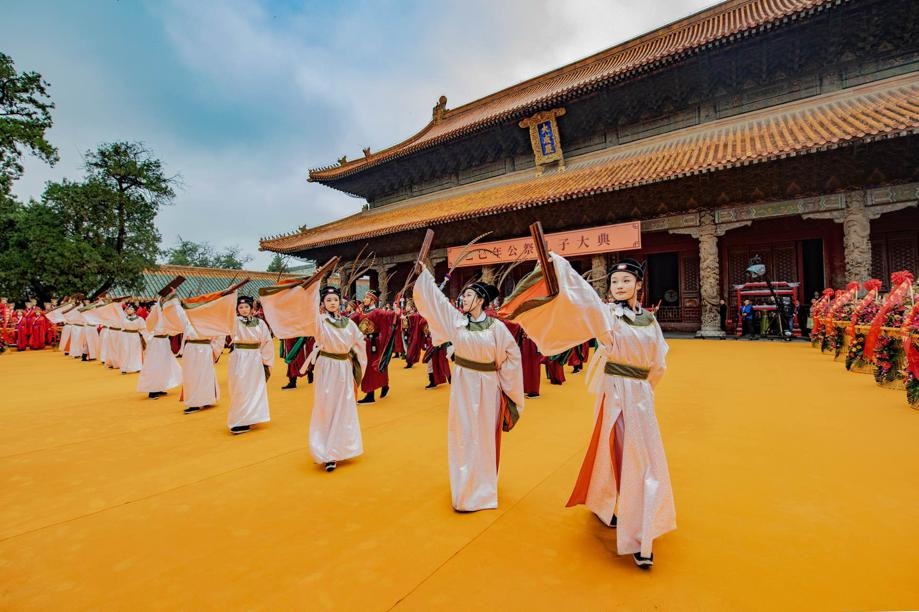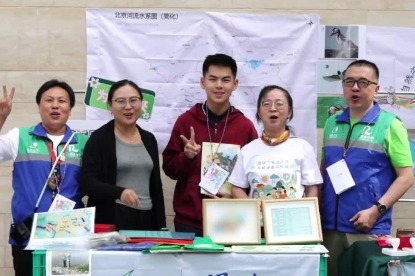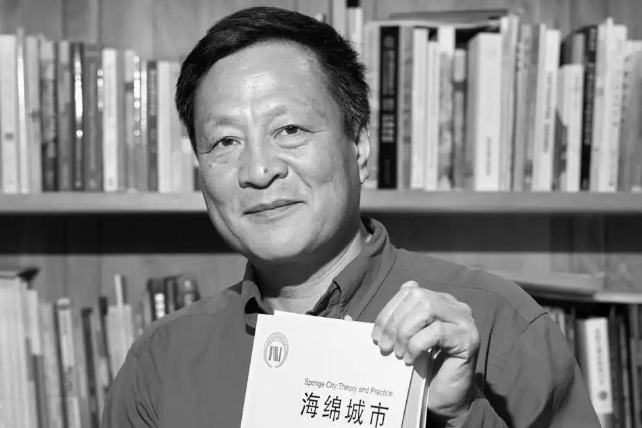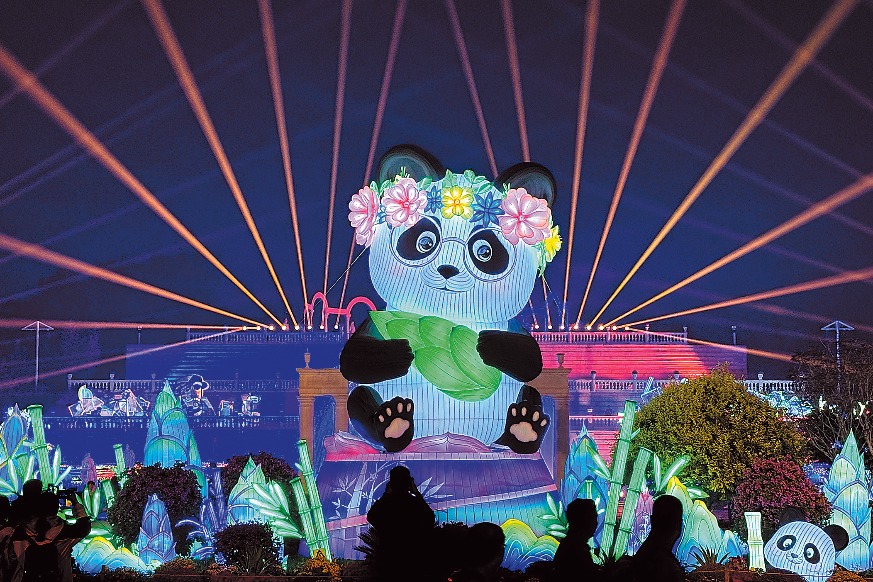China's Epic Journey from Poverty to Prosperity

3. Flourishing Cultural Sector
In a moderately prosperous society in all respects, material progress should go hand in hand with advances in culture and ethics. The country's economic strength and its cultural soft power should increase together. The people should have sufficient food and other daily needs, but they should also conduct themselves with dignity and a strong sense of morality.
Under the leadership of the CPC, the people have followed a socialist path of cultural development with Chinese characteristics, raising their awareness of and reinforcing their confidence in Chinese culture. The development of a great socialist culture has reshaped China's national psyche. Chinese people now have richer cultural activities and greater inner strength, and they have changed their outlook in profound and positive ways.
The ideological foundations of collective endeavor are growing stronger. Socialism with Chinese characteristics and the Chinese Dream are heartily embraced by the nation. Popular support for the CPC, socialist system, and reform and opening up is running high; love of the country and ethnic unity resonate deeply with the people. The public has more confidence in the path, theory, system and culture of Chinese socialism. The core socialist values and the spirit of patriotism, reform, innovation and hard work are taking root among the people. Qualities of a mature citizenry prevail, including openness, inclusiveness, rationality, dignity, and the desire to excel.
The people's heroes, role models, and iconic figures are the brightest stars of our time, and members of the public are more inclined to admire such individuals and become pioneers of progress. China's revolutionary heritage has been carried forward, and revolution-themed tourism is gaining momentum. By revisiting their revolutionary past, people are motivated to refine their character and carry on the revolutionary faith.
The press, films, television programs, publishing, literary and artistic works, and cyberspace maintain the right tone in public communication, showing the enterprising spirit of mainstream society, creating a positive atmosphere for social development, unity and progress, and filling society with uplifting energy. All this has reinforced the cultural bonds shared by the Chinese and created a stronger sense of national identity among the people.
People are enjoying richer cultural activities (Panel 4). Public cultural facilities, ranging from rural reading rooms and cultural stations to urban libraries, museums, cultural centers, and art galleries, have been steadily improved, and are mostly open to the public free of charge or at a minimal cost. Public cultural services have become more diversified, equitable and convenient. With the appearance of digital libraries, cloud platforms and cloud museums, people can enjoy good-quality public cultural services in the comfort of their own homes.
Panel 4 Progress in the Cultural and Tourism Sectors
Public cultural services are more accessible. At the end of 2020, China had 3,212 public libraries, 618 art galleries, 5,788 museums, 3,327 cultural centers, 32,825 township-level cultural stations, and more than 575,000 village-level cultural service centers. All public libraries, cultural centers/stations, and art galleries and more than 90 percent of museums are open to the public free of charge. Radio and TV covered 99.4 percent and 99.6 percent of the population. There were 3.7 million sports venues in China, with a total floor area of 3.1 billion sq m (2.2 sq m per capita). The rural fitness program covered almost all villages.
The cultural sector is experiencing strong growth. At the end of 2020, China had 60,000 enterprises of designated size in the cultural industry, whose revenues for the year approached RMB9.9 trillion. Of this figure, 32 percent came from new business forms. There were 19 national-level cultural industry demonstration parks across the country. The added value of the cultural and related industries reached RMB4.5 trillion in 2020, accounting for 4.4 percent of GDP.
The supply of tourism products has increased. By the end of June 2021, China had opened more than 13,000 scenic areas of Grade A to Grade 5A (including 306 rated as 5A), 45 national and 583 provincial vacation resorts, 300 revolution-themed tourism destinations, and 1,299 towns and villages oriented to rural tourism.
The cultural sector is undergoing sustained, sound development, with new types of enterprise, new forms of business, and new models of consumption emerging at a faster pace. The online cultural industry is growing in strength. Stylish cultural venues, fine cultural products, and creative cultural events meet the demand for greater individuality and diversity, higher quality, and closer connections with the wider world.
The film, television and publishing sectors are booming. Blockbusters jostle for attention during the summer vacation, National Day and Chinese New Year holidays, and bestseller books hit the shelves in a steady stream, regaling citizens with a cultural feast. Effective measures have been taken to foster a wholesome social environment in the cultural and entertainment industries by combating undesirable phenomena. Cultural exchanges with other countries are expanding, enabling people to watch the best artistic performances from around the world without going abroad.
The cultural and tourism industries are more integrated and varied. Sightseeing trips, leisure tourism, farm tours and revolution-themed tourism meet people's varying cultural and entertainment needs, and at the same time promote core socialist values. They introduce travelers not only to China's beautiful landscape but also its splendid culture-an experience that both pleases the eye and nourishes the mind.
Public fitness programs are sweeping the country, in the form of both competitive sports and mass leisure activities. Competing for medals at international events or group dancing in parks-these programs help build healthier bodies as well as stronger bonds among the people. China is becoming a growing power in international sport.
Traditional Chinese culture is preserved and carried forward. Creative evolution and development have injected new vitality, continuing China's cultural traditions, reinforcing its national spirit, and illuminating life in the new era.
More classics and classical arts such as Chinese operas, music, dancing, painting, and calligraphy have made their way into classrooms and become popular among the youth. From old artifacts in museums, historical sites, and texts of ancient books, to intangible cultural heritage passed down through generations, traditional culture is reviving and finding new appeal. Directly felt and experienced, it is becoming more accessible and comprehensible.
Archeological findings have produced more evidence of the origin and evolution of the Chinese civilization and its remarkable achievements. People are increasingly captivated by China's classical arts and awed by its cultural treasures, which speak volumes about the deep roots of the Chinese civilization and the splendor of Chinese history. Celebrations of traditional holidays, including the Chinese New Year, the Lantern Festival, the Dragon Boat Festival, and the Mid-Autumn Festival, continue to observe old customs but also adopt contemporary elements adapted to modern life.
The concepts, values and moral norms of fine traditional culture are still espoused and practiced. They include benevolence, the people-centered approach, honesty, justice, harmony, unity in diversity, filial piety, love for one's family, pursuit of progress, dedication to work, friendliness, advocating what is good and righteous, helping those in difficulties or danger, and acting bravely for a just cause. Rallied by traditional values, including patriotism, collectivism, unity and diligence, the Chinese people are standing stronger together.
The international appeal and influence of Chinese culture is growing. Traditional Chinese medicine, martial arts, Peking Opera, the tea ceremony and China-made films are now found in more countries. Chinese food, scenic sites, TV dramas, variety shows, online literature, and pop music are enjoyed globally. The 56 UNESCO world heritage sites in China are windows to understand the country's past and present.




































